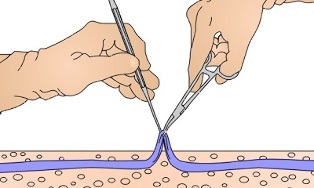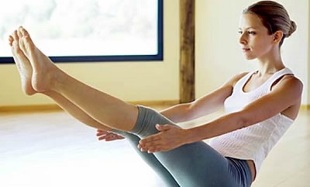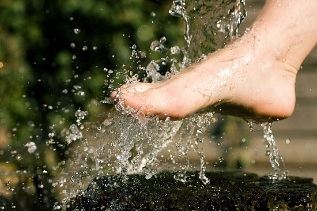
Fatigue, heaviness in the legs, slight tissue edema, swelling of the veins and the first visible "vascular network" may indicate the development of varicose veins in the lower leg.
The statistics of this disease are terrible. For example, in one country, there are about 37 million people suffering from this disease. Every 6th patient among them is a girl under 12 years old. The early onset of the disease significantly increases the risk of complications, which, when ignored, threaten disability and even death.
What’s so horrible about varicose veins in the lower leg? Why is it so important to stop its development at an early stage? About its treatment methods, preventive measures from the point of view of experts, as well as many other useful information about varicose veins in the lower legs, read this article.
What are varicose veins in the lower leg?
All the veins in the human body are divided into deep, superficial and perforated. Vessels in almost all work (90%) transport blood to the heart, and perforated vessels are a kind of bridge between the deep and the shallow. The vein structure provides the presence of a valve that directs and promotes blood flow only in the right direction. When the circulatory system fails, part of the blood accumulates at one point. This led to the expansion of local (elongated) ships. The first to suffer is the deep vein (called the internal varicose vein), then superficially in the form of "spider veins and knots".
For a complete perception of the severity of the disease, it should be noted that its development threatens the development of thrombophlebitis, blockage of the pulmonary arteries with thrombus (or thromboembolism), as well as trophic ulcers in the legs, lymphostasis (lower extremity edema) and many other problems that can cause patientsdeath that causes the patient to die.
The main cause of varicose veins in the lower leg
Many factors can cause damage to the function of blood vessels, blood flow in general, and then stimulate the appearance of varicose veins in the superficial veins of the lower legs. Let's consider the main ones:

- Congenital defects of valves located in veins - this disease can be inherited. According to statistics, two-thirds of patients have close relatives with similar illnesses.
- Inadequate mobility can reduce pressure on soft tissues. As a result, the load on the blood vessels decreases, their tone.
- During a "standing" position, the pressure inside the foot canal increases tenfold. With a long vertical arrangement, the valves are unable to cope with the load increase, which leads to a violation of their function.
- Decreased vascular tone - may be due to age-related changes, loss of wall elasticity after a particular illness.
- Pregnancy - this period is characterized by an increase in blood in the female body, as well as the hormone progesterone, estrogen. Together, these changes stimulate the development of varicose veins in the lower leg. True, the normalization of the process may occur about 1 year after birth, if varicose complications have not yet arisen.
Overweight, the presence of injuries, previous operations, hormonal disorders and the use of contraceptives complete the list of causes of the development of the disease.
Determining varicose veins in the lower leg - symptoms and diagnosis
The effectiveness of treatment, the speed of positive results depends very much on the accuracy and timeliness of the diagnosis of the disease.
Signs of varicose veins in the lower part of the leg will help determine the disease at an early stage:
- the appearance of slight swelling of the legs;
- swelling of superficial veins, increasing in diameter;
- itching in the lower leg with varicose veins;
- feelings of overwork, heavy;
- burning, pain caused by excessive stretching of the venous wall;
- limb cramps;
- Significant blue skin along the veins, compaction (aging) of problem areas of the tissue, formation of varicose eczema on the lower leg.

Even a slight violation of the integrity of the skin in the eczema area can cause the appearance of trophic ulcers.
In a variant of deep varicose veins in the lower part of the leg, symptoms may appear at a later stage, which is undesirable. Therefore, if you have a slight suspicion of the disease, it is recommended to see a doctor.
The diagnosis of varicose veins in the lower part of the leg is done using special equipment. Such studies are safe, painless and allow you to study in depth the severity of the disease.
There are several diagnostic options:
- visual inspection;
- color duplex examination method - a blood flow map compiled during the study allows one to assess the direction and speed of blood movement through the veins. This procedure tells about the condition of the blood vessels, which is important for predicting the development of varicose veins;
- phlebography - it is very rarely used, as it involves X-ray examination.
During diagnosis, you can observe the condition of blood vessels, valves, analyze their function and determine the direction of blood flow.
Generally, the first reason to see a doctor is an aesthetic change. From the first type, they are harmless, they can develop into serious diseases and complications. Therefore, you can not ignore their importance.
Classification of varicose veins in the lower leg
Doctors usually distinguish 5 stages of varicose veins in the lower leg, each with its own symptoms:
- Level 1- reticular varicose veins in the lower part of the leg, which are most easily treated. It is distinguished by the presence of a "vascular network". Enlarged veins can be seen through the thin skin (especially in the fossa below the knee), there is no pain yet.
- Stage 2- segmental varicose veins in the lower leg, accompanied by slight fatigue, heaviness in the legs, and even cramps in the calf muscles, slight swelling of the veins may occur;
- Level 3- venous ducts protrude significantly from the skin, especially in the lower legs, thin skin with dark brown spots, itching, rashes, signs of dermatitis. Increased swelling causes discomfort when moving.
- Level 4Varicose veins in the lower part of the leg - the symptoms are pronounced, complications of the disease appear, such as thrombophlebitis, manifestations of trophic ulcers. Varicose veins of the varicose veins appear strongly through the skin of the thin legs, feet and thighs.
- Level 5- has all the symptoms of level 4. In addition, the disease extends to the groin area. The number of trophic ulcers increases rapidly, as does the frequency of thrombophlebitis crises. The doctor prescribes a deformity with a varicose vein in the lower leg at this stage.
The main task of the patient and his doctor is to prevent the development of the disease beyond the initial stage, and the sooner you contact a phlebologist, the easier it will be for him to stop the disease.
Treatment of varicose veins in the lower leg

Medicine does not stop, but develops the latest technology to fight venous disease. Treatment of varicose veins in the lower part of the leg can be done with conservative methods (medication, minimally invasive procedures), surgery, home treatment in combination with massage.
Decreased appearance attractiveness is not a complete list of possible problems. Complications and defects can add to it. Modern medicine offers a variety of non-surgical effects on problem areas, and is often the physiotherapy for varicose veins in the lower extremities that is most effective in the early stages of the disease:
- The use of creamy preparations, gels, ointments for varicose veins on the lower part of the legs, this medicine brings significant relief. They are easily rubbed to the surface, causing no pain and discomfort.
- Use of venotonics - medications that, in the event of a varicose vein in the lower leg, normalize vein function.
- Laser exposure - the method of endovenous laser vein removal (ELOV) is widely used in the fight against varicose veins. The principle of the procedure is to stop the function of the problem vein, because of its effect on hot rays. Laser manipulation is performed under local anesthesia, no restrictions on action and stay in the hospital. The patient is entitled to return home immediately after the procedure.
- Magnetotherapy for varicose veins in the lower part of the leg is a modern additional method that promotes blood thinning, stimulates blood circulation and, as a result, encourages the removal of toxins from tissues and fills them with oxygen.
- RF exposure - RF works like a laser. They exclude problem vessels from the bloodstream, thus eliminating the risk of possible complications;
- Sclerotherapy - involves the introduction of a special drug into a diseased vein, which supports the mounting of the vessel wall and the removal of it from the bloodstream after some time.
It should be noted that early consultation with a doctor and special examination is required.
Surgery for varicose veins in the lower leg
Late visits to the doctor, neglect of the disease causes CVI (chronic venous insufficiency) and minimal invasive therapy inability. In such cases, surgery can be saved.

The following factors are considered indications for varicose vein surgery on the lower leg:
- the disease is at a severe stage, when trophic ulcers are progressively manifested;
- development of thrombophlebitis;
- discomfort associated with excessive fatigue, swelling of the legs.
The principle of surgical intervention is based, like conservative techniques, on the removal of problem veins from the circulatory system. Only with the minimum invasive method are the vessels glued together, and during operation they are fastened on both sides and removed.
There are several main methods of varicose vein surgery in the lower leg:
- Phlebectomyis a classic variant of surgical intervention. Small incisions (up to five millimeters) are made in the skin where the probe is inserted and the sore vein is removed. This procedure does not take more than two hours and does not involve long hospitalization.
- Miniflebectomy- in contrast to the classic phlebectomy in the size of a hole in the skin. In this case, this is a minimum puncture that minimizes the recovery period, leaving no visible marks on the body.
- Short stripping- requires precise location in the problem area. Only affected segments are removed. There are no traces left after the procedure.
- Varicose veinsunder high optical endocoup control. It is injected directly into the diseased vein, the operation is performed through a monitor. The experience and qualifications of the surgeon increase the chances of a successful operation.
Surgery will solve the problem of varicose veins, reduce the risk of getting sick, and help reduce symptoms at a later stage. Compression underwear, venotonic medication is a key condition for the recovery period. They contribute to early recovery, normalization of blood circulation.
Treatment of varicose veins in the lower leg with folk remedies

Home treatment occupies its own niche in the treatment of varicose veins in the lower leg. There is no need to emphasize their interests, but nothing undermines their dignity. Cooked decoctions, infusions, compresses can reduce pain, relieve heaviness and fatigue after a hard day's work.
As a treatment option for reticular varicose veins, traditional medicine recommends the color of calamus root in red wine for internal use. There are also recipes for exfoliating.
Unopened birch buds are injected for 10 days at 0. 5 liters of vodka. When ready, the product is applied to the skin.
Compresses are useful for varicose veins in the lower legs from yogurt with garlic or wrap with fresh cabbage leaves.
You can not expect very fast results. The funds are suitable for prophylactic purposes and for the treatment of primary varicose veins in the lower extremities along with medications prescribed by the doctor individually. Do not use the treatment without talking to your doctor.
Massage and gymnastics for varicose veins in the lower leg
The healing properties of massage have long been known in humans. Massage on the lower leg with varicose veins also has a good effect. This increases blood and lymph flow, normalizes venous pressure, and initiates metabolic processes in tissues.
Massage techniques are weird. It is forbidden to touch the affected vein area in any way, only in the vicinity. Light attempts, wide grips and blows are the main techniques of the procedure. It is recommended to combine massage with a set of exercises.
Gymnastics for varicose veins in the lower extremities involves the implementation of various actions:

- Heating - two to three minutes you need to lie down with your feet up. They should lean against a wall or other height, this position guarantees their complete relaxation.
- "Bike" training - the same movement as when cycling. Only the body position is "lying on the back".
- "Scissors" exercise - lifting the upper limbs that intersect between them for at least one minute.
- Exercise for the calf muscles - in the "supine" position, bend one leg until the knee reaches the chest. Perform movements in the opposite direction, while massaging the troubled muscles. Repeat the procedure four times with each leg.
- Stand up. For three to five minutes, lift your toes and lower yourself to the starting position.
- Exercise complexes or exercise therapy for varicose veins in the lower extremities provide preventive and therapeutic effects aimed at accelerating venous blood flow to the heart, improving vascular tone.
It is important that the doctor not only approve the set of exercises for daily training, but also ensure that the patient performs them properly, without putting extra pressure on the vessels.
Prevention of varicose veins in the lower leg
It's better to prevent problems than to solve them later! Experts unanimously recommend the following measures to prevent this disease:
- Go more - this reduces the risk of blood and lymph congestion.
- Exercise regularly against varicose veins.
- Shoes must be comfortable, heels should not exceed four centimeters.
- Prolonged exposure to sunlight does not work well on the walls of blood vessels, limiting time to hot showers.
- Give priority to contrast baths, it improves blood circulation.
- Focus on fresh vegetables, fruits, plant products. A special diet for varicose veins on the lower part of the legs is the "companion" of health.
- Re-hydrate your body with 2 liters of fluid a day.
- Eliminating fatigue, improper sitting or uncomfortable positions during rest is the best prevention for varicose veins in the lower legs.

Keep in mind that varicose veins in the lower legs are a progressive disease. From painless "stars", it can develop into thrombophlebitis and trophic ulcers. Beauty, the absence of pain and heaviness in the legs can be maintained by following the moderate recommendations of experts. If you have a slight suspicion of the disease, see a phlebologist immediately. Remember, varicose veins cannot be completely cured, but it is possible to prevent them, to minimize the risk of their further development. Get well!




































